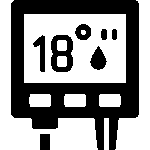Low Voltage Camera Module Power Reference: Troubleshooting and Solutions for Electronics Hobbyists

The Problem :
When working with low voltage camera modules, one of the most common issues you might face is insufficient power supply, leading to poor performance or failure to operate correctly. These modules often require specific voltage levels to function properly, and anything below that can cause blurry images, failure to start, or even damage the components over time.
The Solution :
To fix this issue, ensure your power source is providing the correct voltage as per the camera module’s specification (usually 3.3V or 5V). Use a regulated power supply and check the connections to prevent voltage fluctuations. For beginners, a simple way to stabilize the power is by using a voltage regulator. These components will make sure your camera module receives a steady voltage, avoiding the issues caused by fluctuating power.
Practical Example :
Imagine you’re building a security camera project for your home. You’re using a low voltage camera module, but it won’t turn on properly. After checking the connections, you realize that the power supply is unstable, fluctuating between 3V and 4V. By introducing a 3.3V voltage regulator, the power to the camera module becomes stable, and the camera works perfectly.
Sample Calculation :
Let’s say your camera module requires 5V, but your power supply gives 9V.
To drop the voltage safely, you can use a simple voltage divider with resistors.
Here’s an example for 5V:
You need a resistor that will drop the voltage from 9V to 5V.
Using the formula V_out = V_in * (R2 / (R1 + R2)), choose appropriate resistor values to achieve a 5V output.
Suggested Products :
For solving power issues, you might need a voltage regulator or MOSFET to manage the power distribution. Check out voltage regulator or MOSFET at SmartXProKits. Shop now at SmartXProKits.in and support India’s innovation by buying high-quality Make in India components!



















